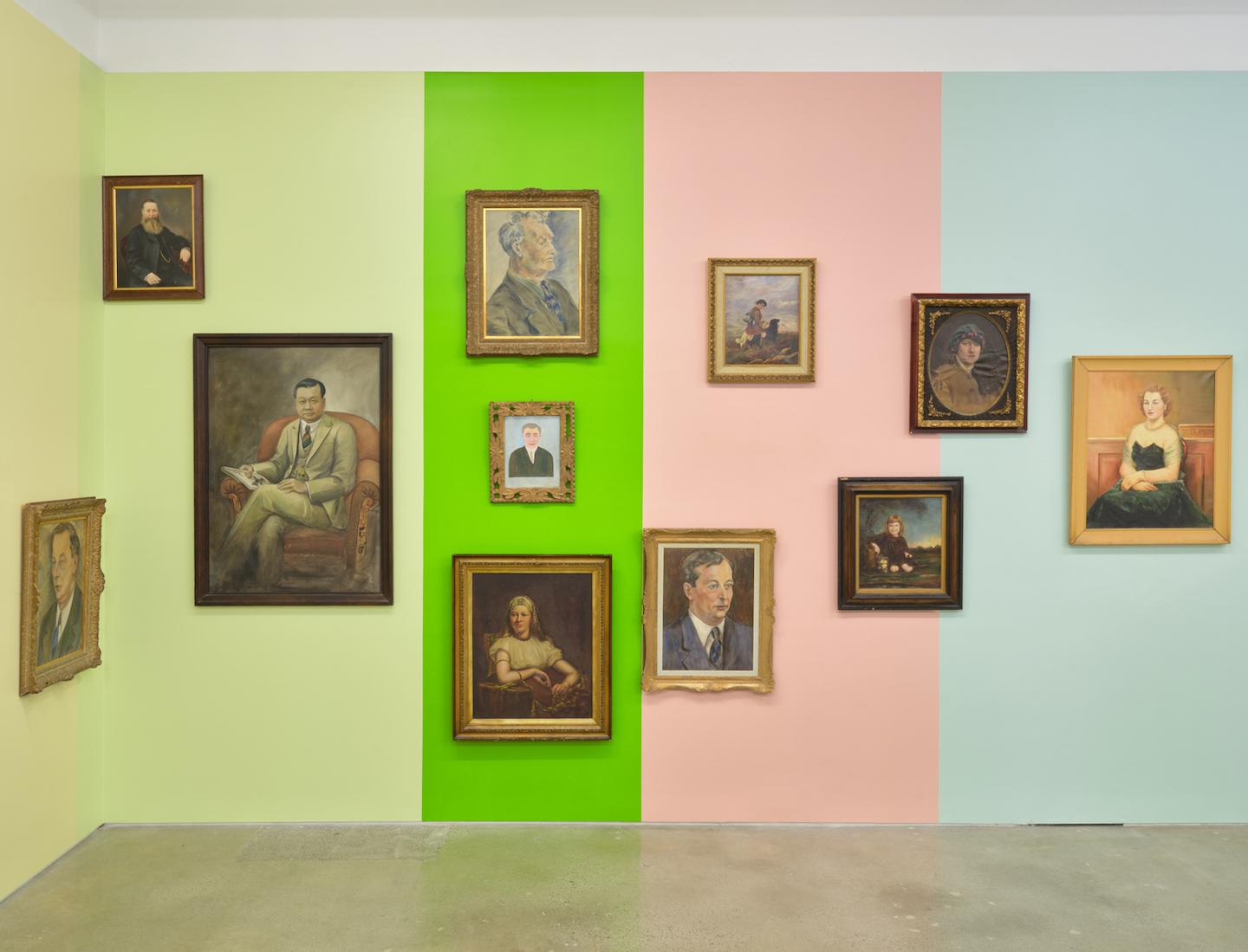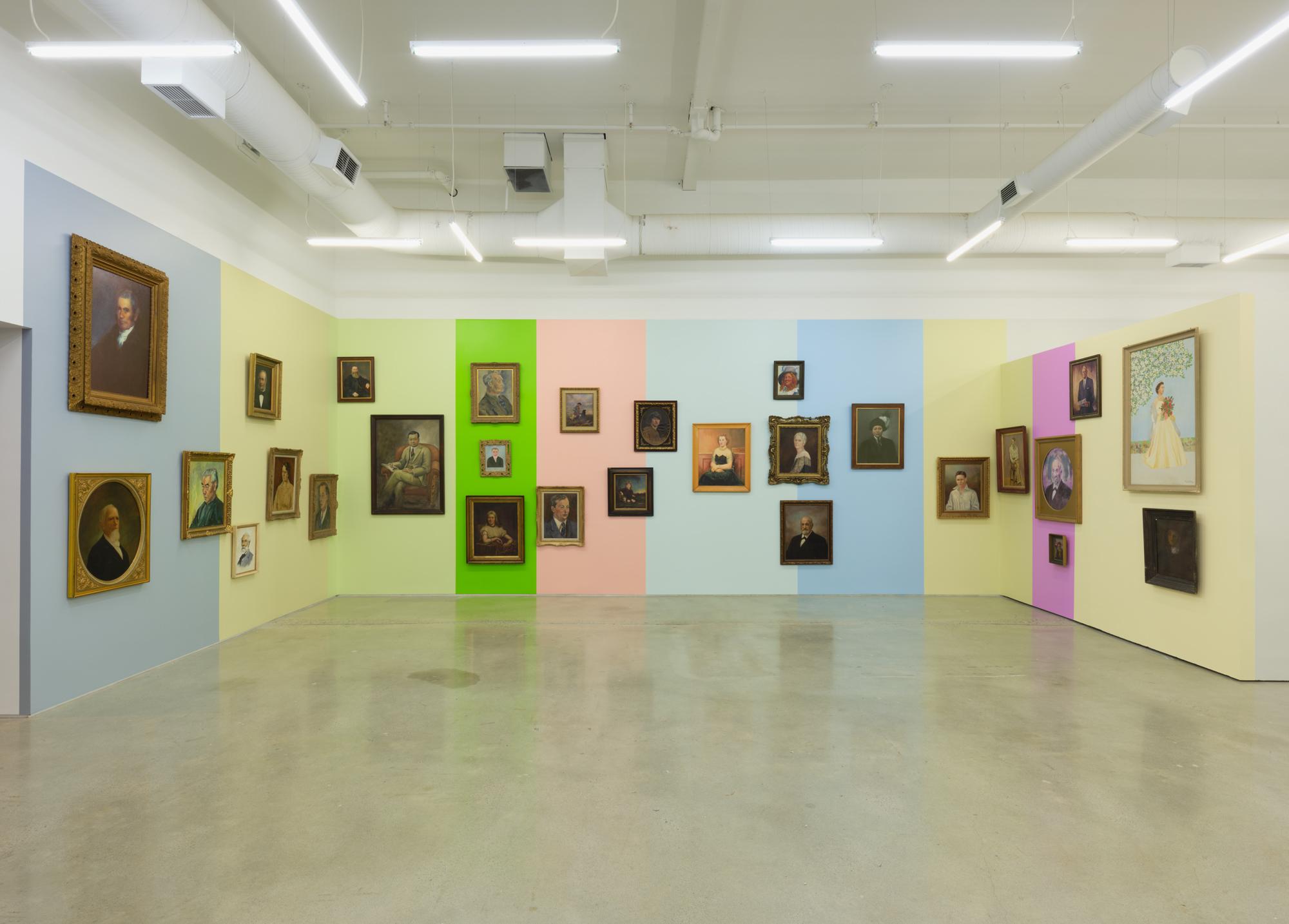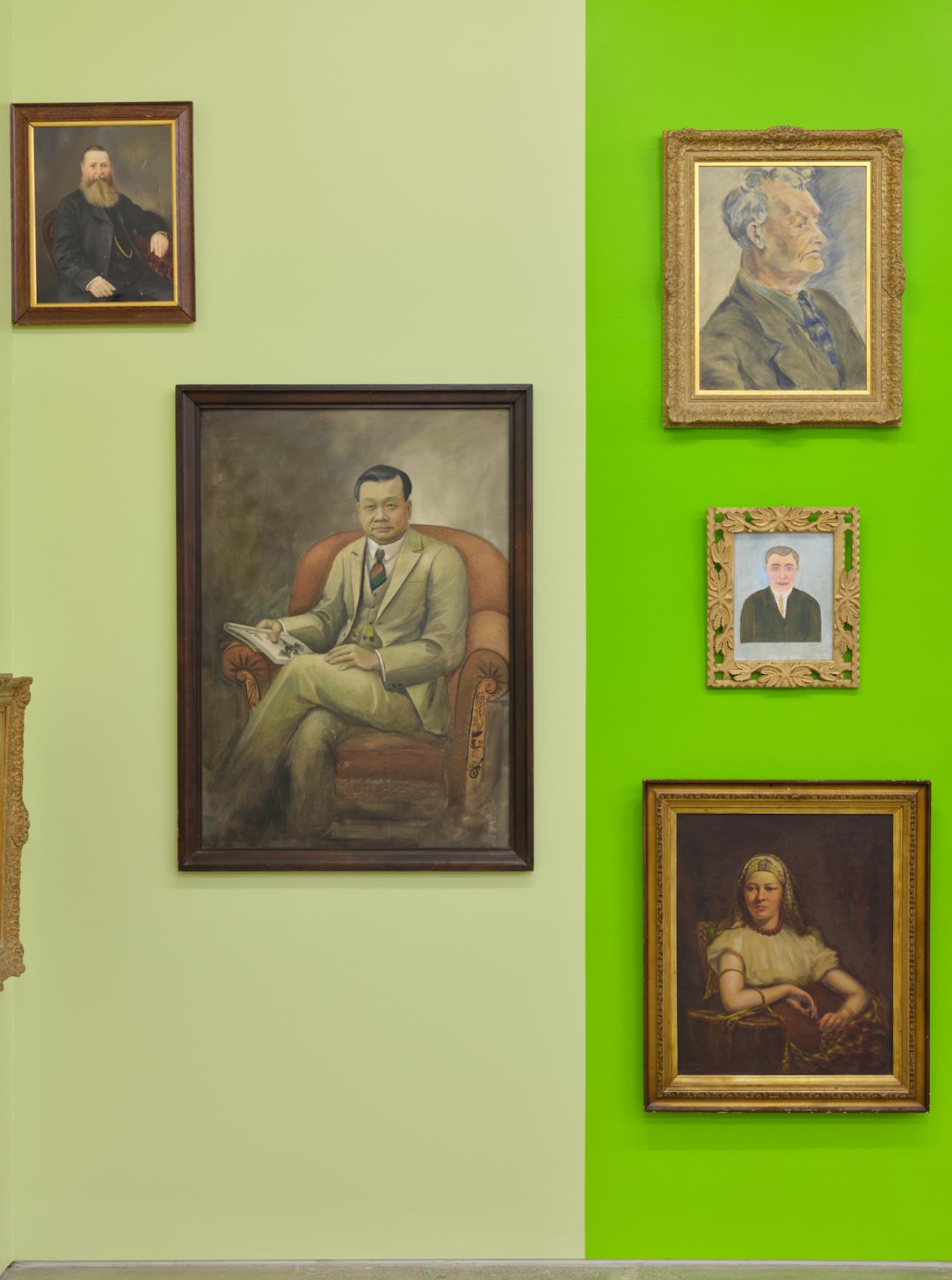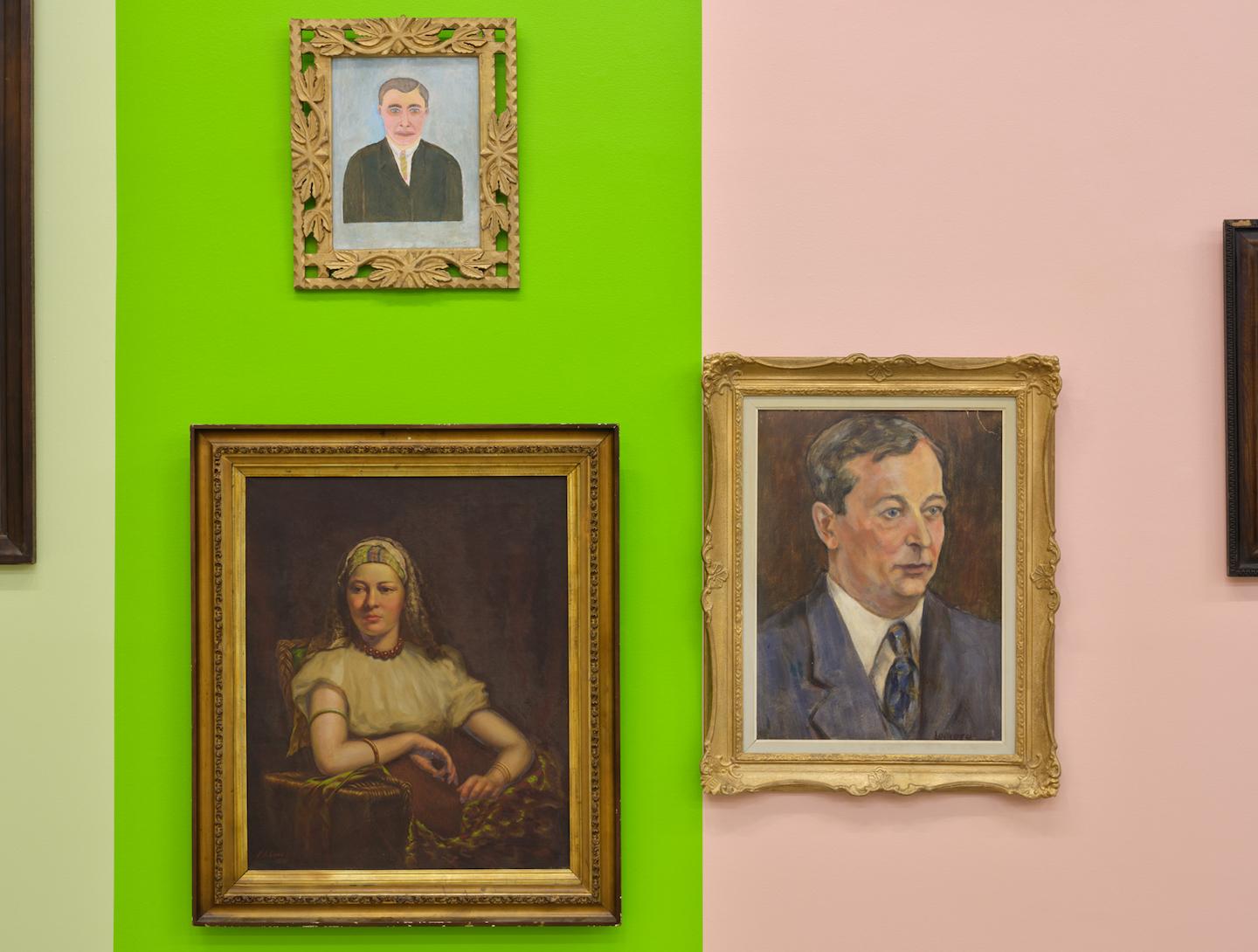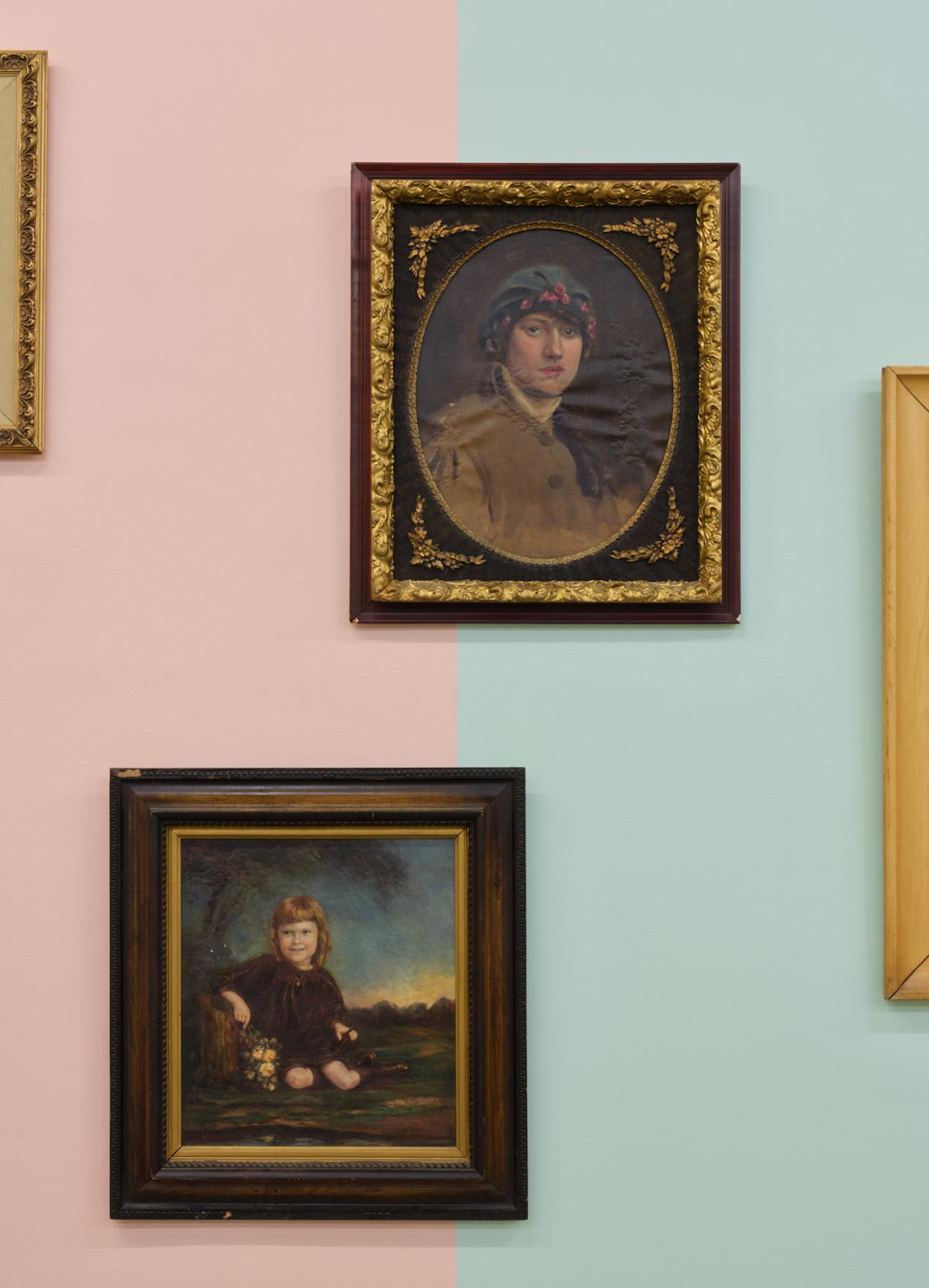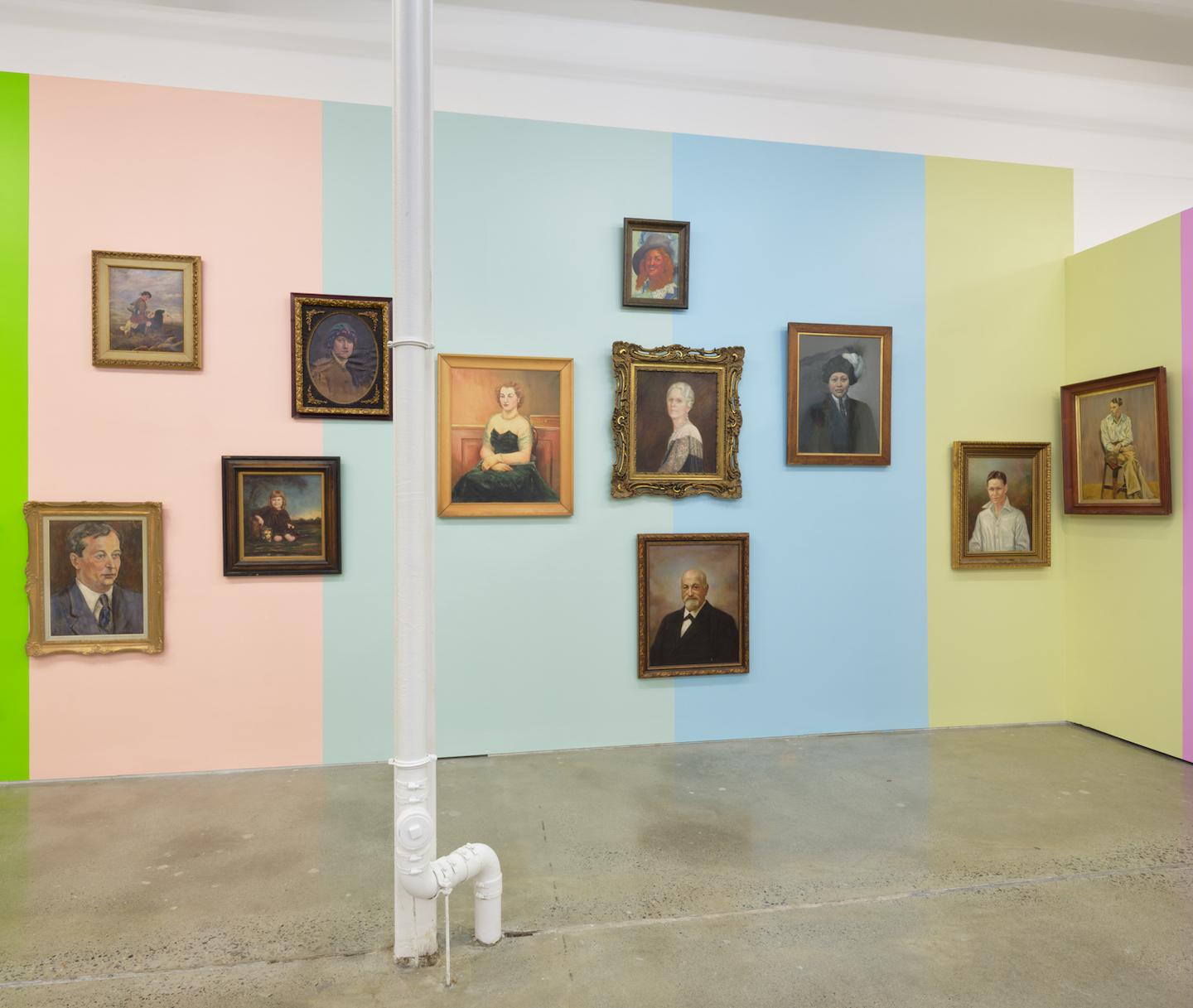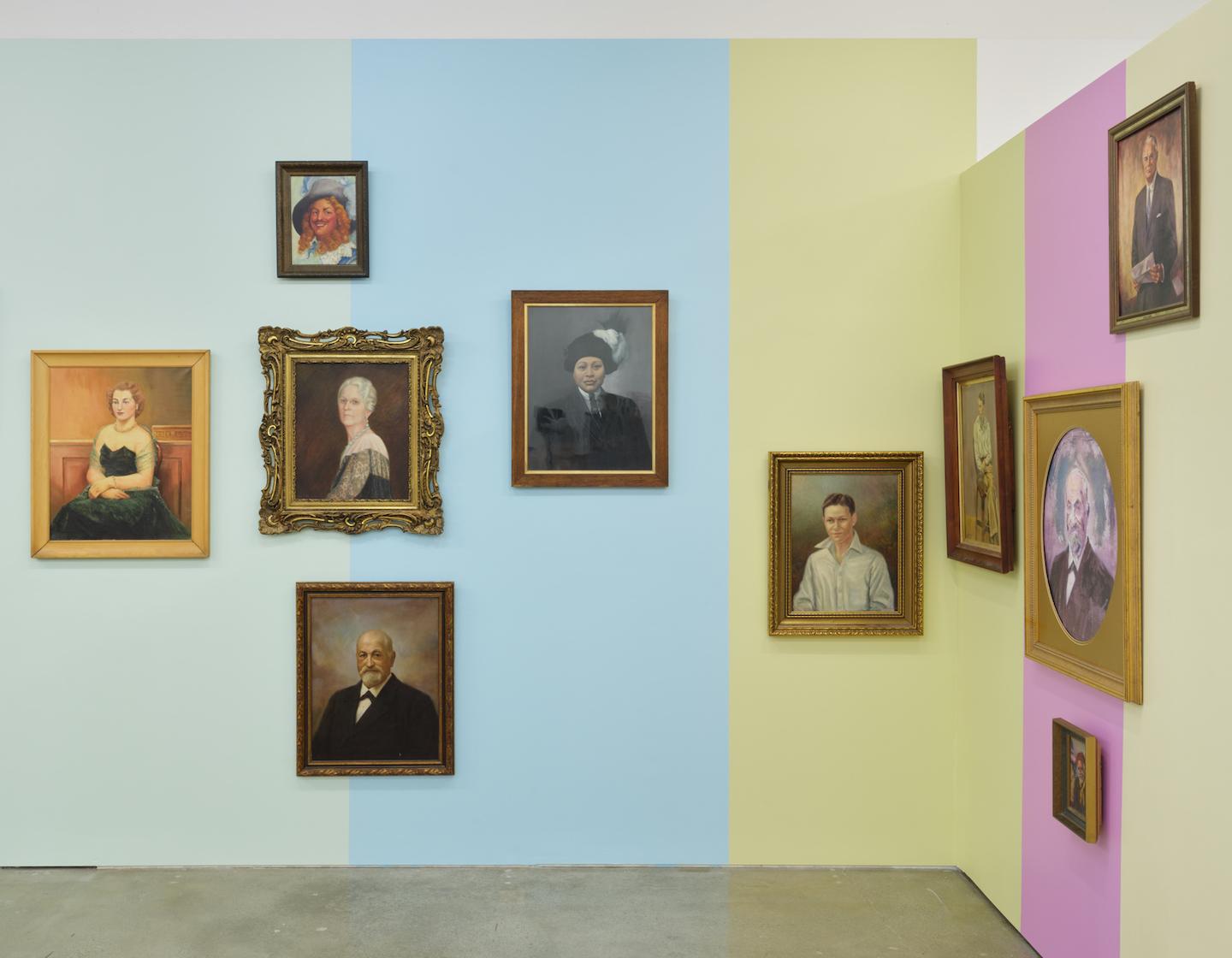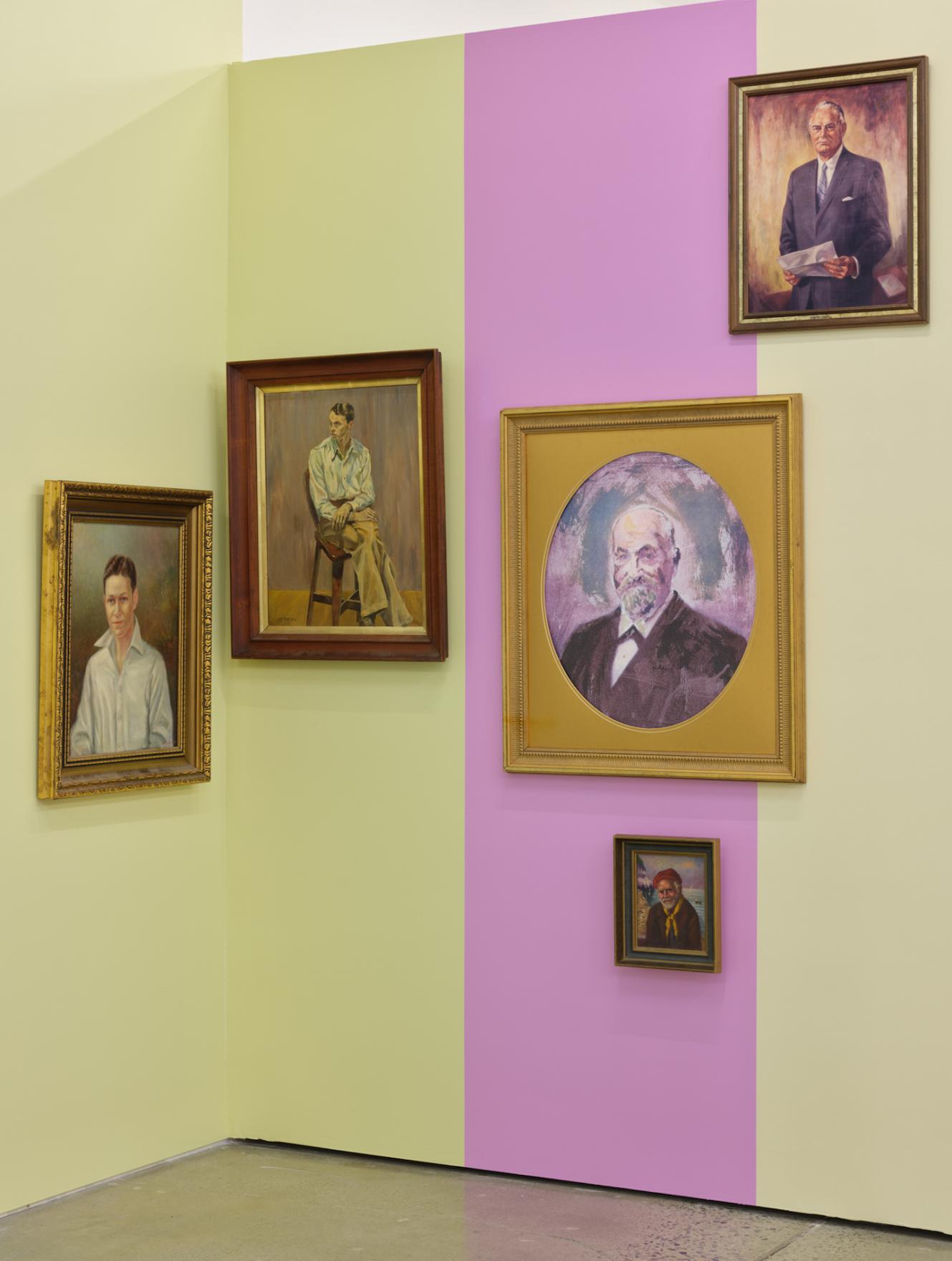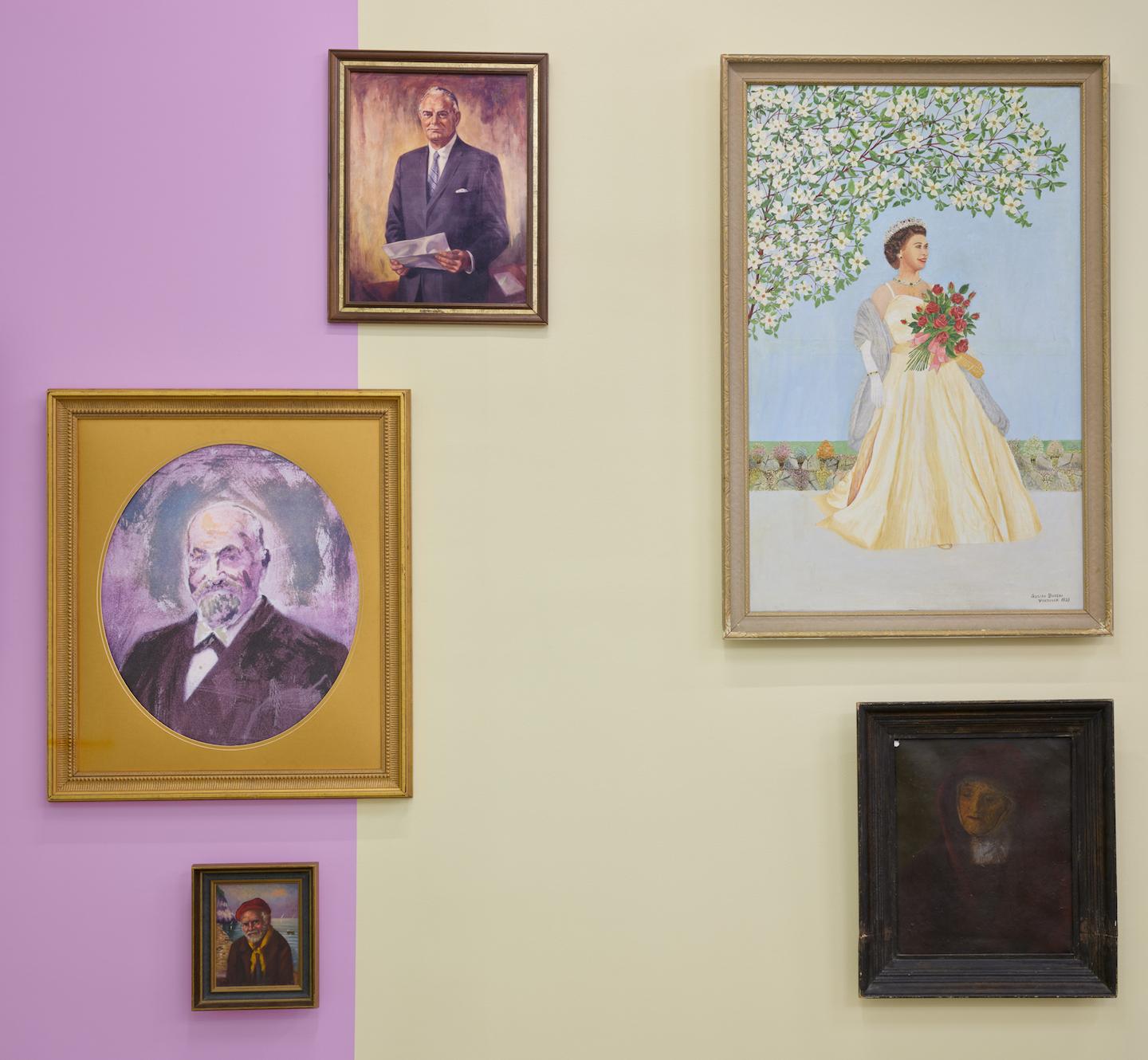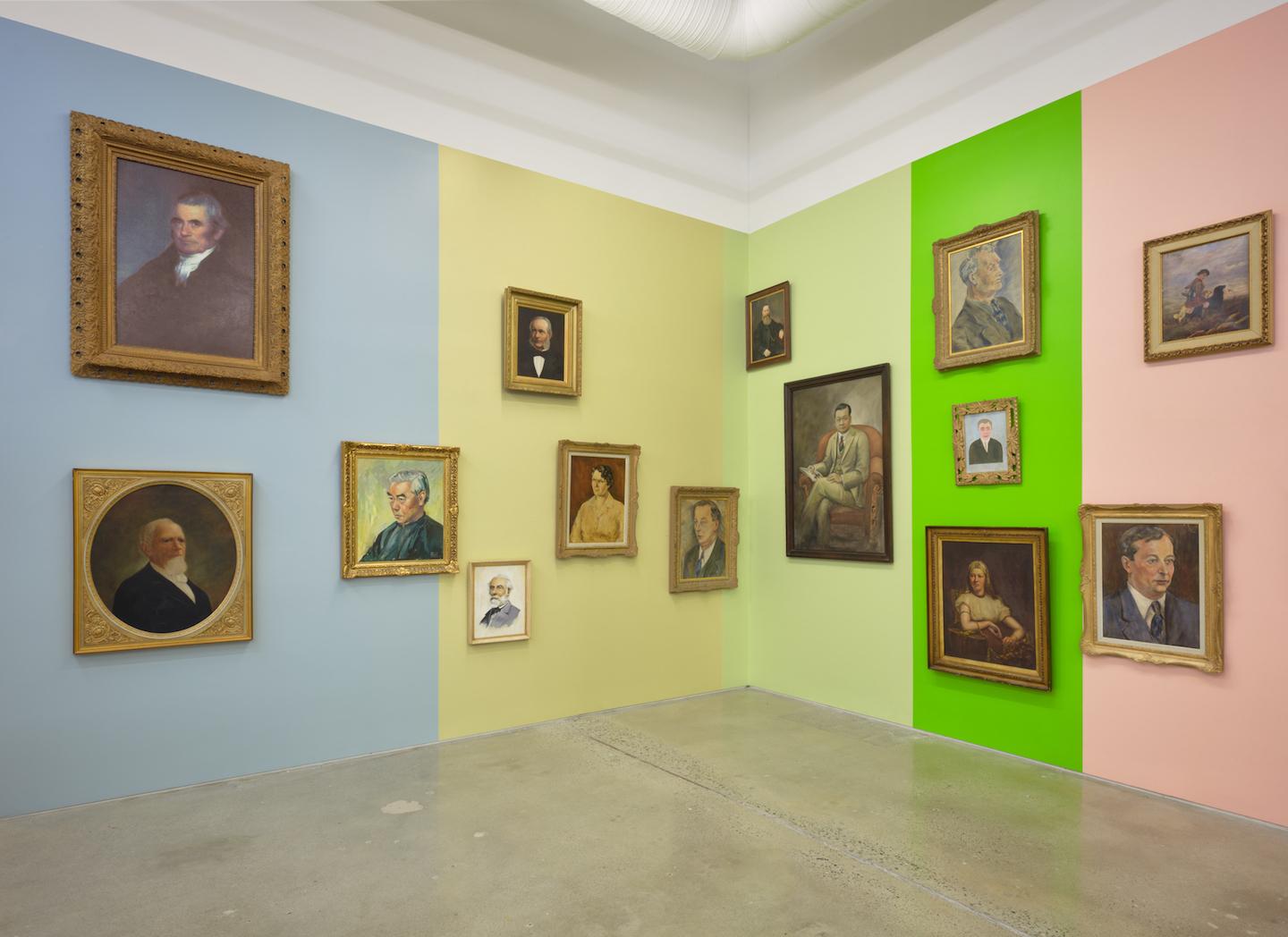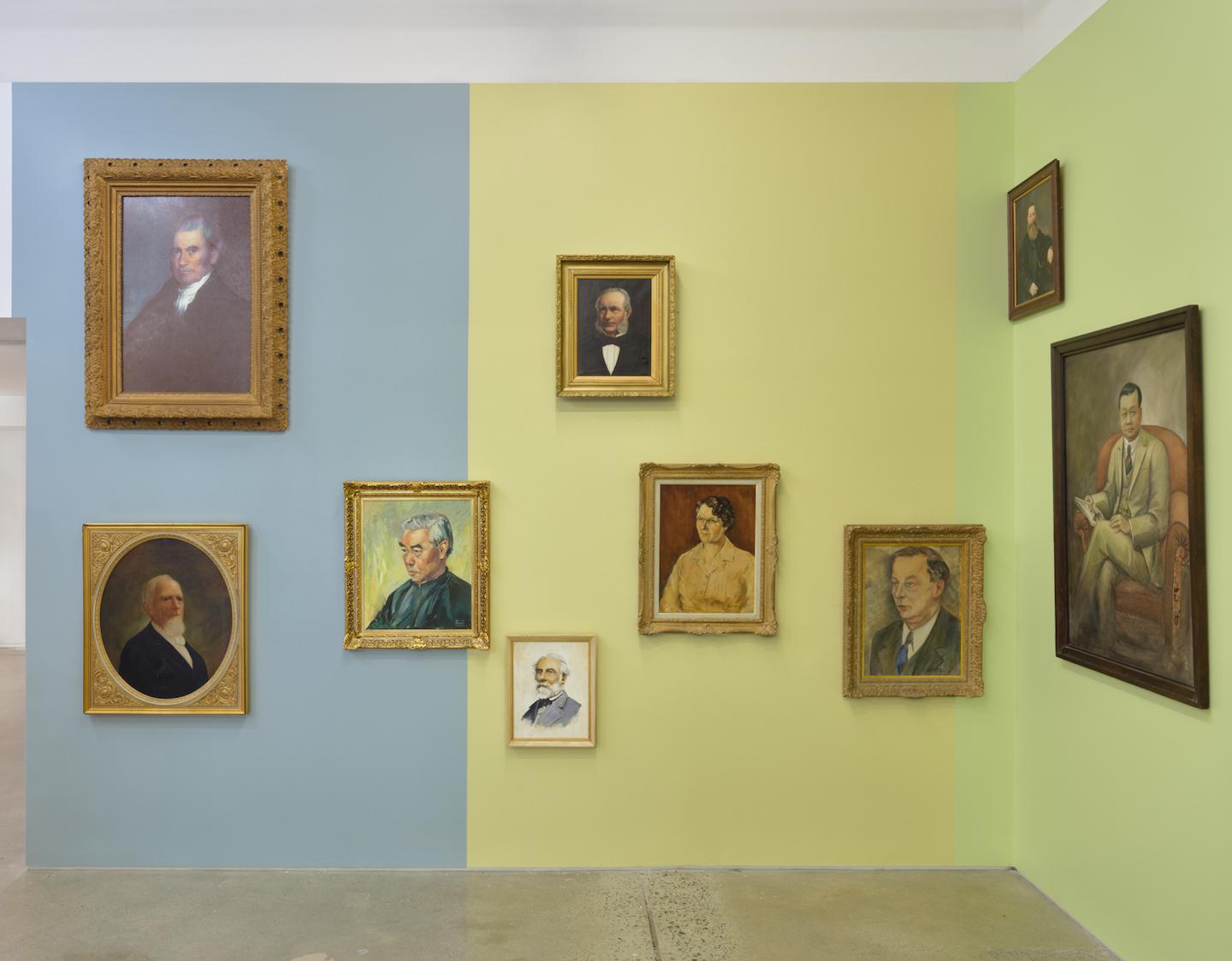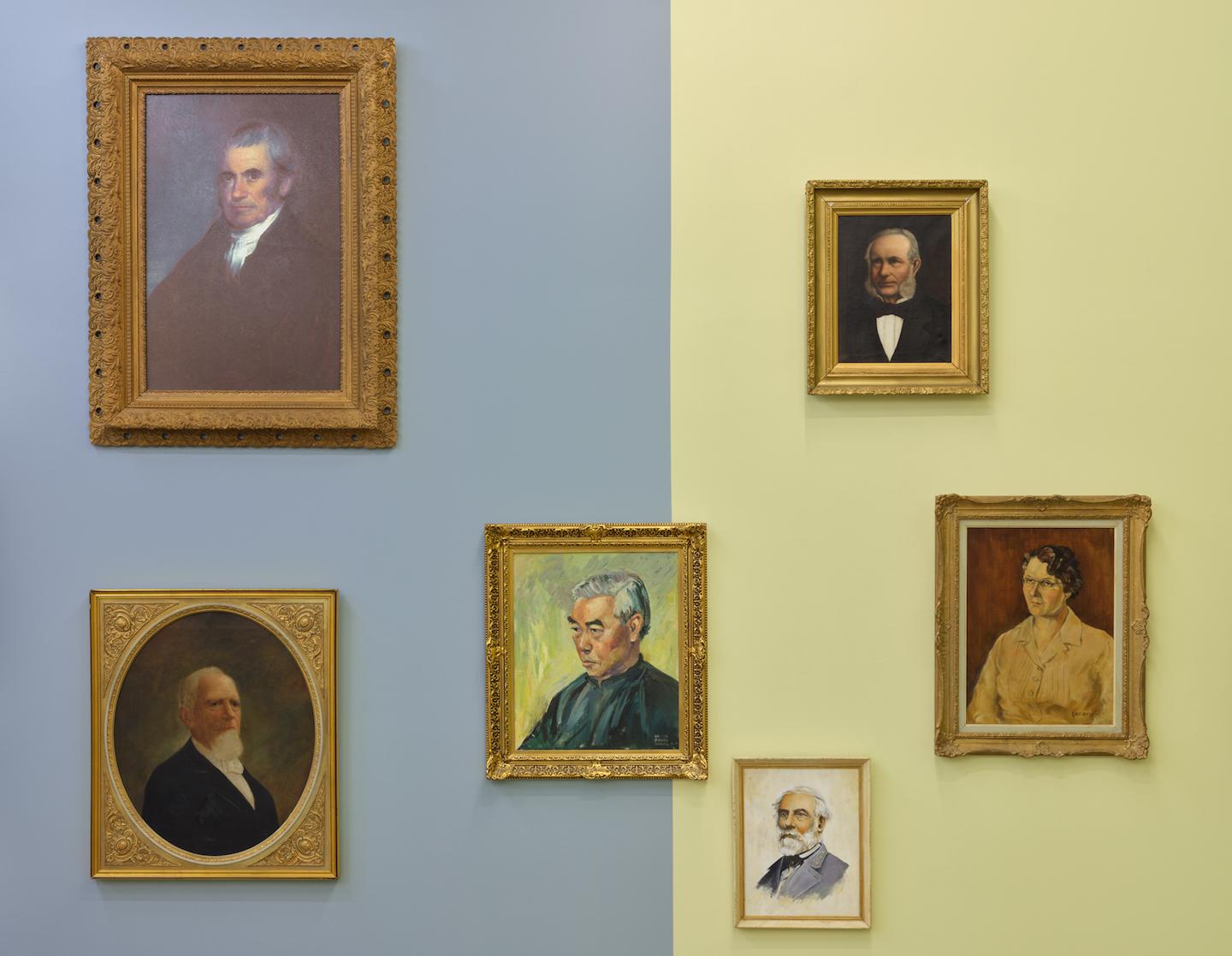28 PORTRAITS, exhibition detail, painted colour panels paired with portraits from Mount Pleasant Furniture's collection, installation for The Prop House: A Collection of One Million Objects exhibition, Griffin Art Projects, Vancouver, 2024. Photo: Rachel Topham.
28 PORTRAITS (2024)
28 Portraits is my response for The Prop House: A Collection of One Million Objects. Co-curators Paul Wong and Lisa Baldissara asked me to participate, along with five other artists. Once I visited Mount Pleasant Furniture (MPF), a Vancouver prop house, I decided to work with all the painted portraits that I found in their holdings. There were 28. I made a floor-to-top-of-wall painting to contain them, toning to the portrait colours.
28 Portraits reminds me of Steve’s Vinyl (2011), where I painted floor-to-ceiling colour sections to match the dominant colours of the album covers, and also of About Face, where I gathered all the portraits at Union Theological Seminary (New York, 2012) and made an artist book / catalogue about them, while simultaneously removing and replacing them with painted rectangular silhouettes.
Notes on process:
Using a ‘system’ for selection, rather than judgement of quality, the portraits were a jumble of styles and states of condition, with their dust, gashes and touch-ups underlining their life as props. Most were painted by trained painters and had a life as likenesses to individuals before they became anonymous props. Many featured late-19th to mid-20th century Western painting styles, including formulaic colonial conventions of dress and posing. Some appeared to be commemorative portraits, while others were anonymous composite characters - the Maritime fisher; a copy of the Laughing Cavalier (Frans Hals, 1624). As well, there were some portraits by folk artists and others by copyists.
I could make out some signatures: Lemary; Doran; Nathalie Comte; V. A. (Victor Albert) Long; Nesta Bowen Horne. Nathalie Comte painted three of the portraits. Nesta Bowen Horne was born in Barbados in 1896, studied art in New York and Paris, immigrated to Vancouver in 1929, painted and showed in annual Vancouver Art Gallery exhibitions during the 1950s.
I found correspondences between pairs of portraits: those with oval mat boards; those with feathered hats; those in a landscape; those with graying beards; men with ties; poses of contemplation; dissatisfied expressions; executives in suits; sitters holding papers; young men in open white shirts; women wearing necklaces and earrings; the contrast of a young Queen Elizabeth II in white and an elderly and disappearing copy of Old Woman (Rembrandt).
I began planning a floor-to-ceiling background or under-painting to connect and enliven the portraits, matching colours to details of the portraits colours. The resulting wall painting frames and makes colour connections between portraits, and projects the cohesiveness of a single artwork.
During the exhibition, curator Catherine Clement saw the show and immediately identified a large portrait of a Chinese man in an armchair as Yucho Chow, the first Chinese photographer with a studio in Vancouver’s Chinatown (1907-49). Coincidentally, Griffin Art Projects had previously published Whose Chinatown? (c. 2021) which featured a biography and photographs by Chow. It was a success of 28 Portraits that this portrait went from unknown to commemorating a significant figure in Chinatown and Vancouver’s history. In early 2025, the portrait was donated by the owner of MPF, Leslie Madsen, to the Chinese Canadian Museum in Vancouver. The painter of the portrait is still unknown.
